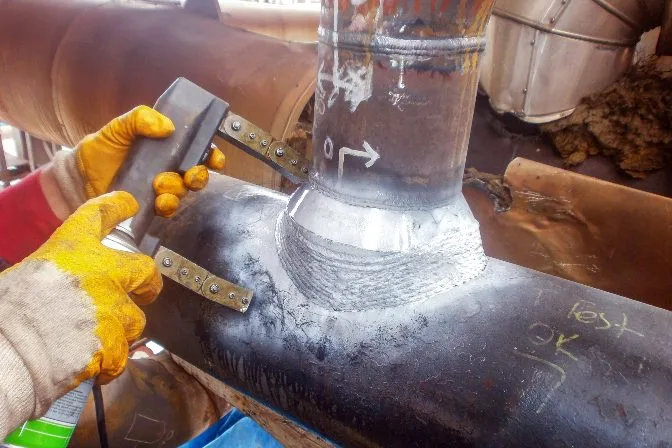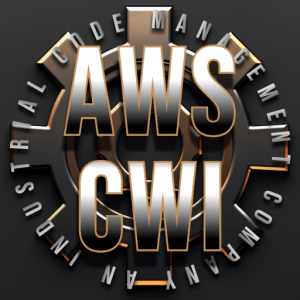Exploring the Importance of Welding Evaluation in Industrial Applications: Securing Against Failures and Enhancing Durability
Welding examination works as an important line of defense in commercial applications, ensuring the architectural stability and integrity of welded elements. By methodically recognizing issues such as porosity and insufficient fusion, examinations not just prevent failures but also prolong the life expectancy of crucial properties. Sticking to industry requirements boosts both safety and security and operational effectiveness; nevertheless, the implications of ignoring these methods can be serious. As we take a look at the complex advantages of regular inspections, it comes to be obvious that understanding these characteristics is not merely an issue of compliance but a critical crucial for longevity and danger reduction.
Function of Welding Evaluation
Welding examination offers as a critical safeguard in industrial applications, making certain that bonded structures fulfill specified criteria of high quality and security. This procedure involves an organized examination of welds to verify their integrity, toughness, and compliance with recognized codes and specifications. The function of welding assessment is complex, encompassing both visual assessments and non-destructive testing techniques, which might include ultrasonic, radiographic, or magnetic bit screening.
Reliable welding evaluation determines prospective issues early, reducing the risk of disastrous failings that can develop from insufficient welds. By making certain that welds are carried out according to design requirements, examiners add to the overall architectural integrity and longevity of components in crucial applications, such as stress vessels, pipelines, and architectural structures.

Common Welding Issues

One of one of the most widespread problems is porosity, characterized by tiny gas pockets entraped within the weld steel. This happens due to pollutants or improper shielding gas, endangering the weld's toughness. One more significant issue is incomplete fusion, where the weld steel stops working to bond effectively with the base product, possibly bring about structural weak points.

Cracks can also create throughout or after the welding procedure, often credited to thermal anxieties or improper air conditioning prices. In addition, damaging, where the base steel is deteriorated along the weld grain, can compromise the joint and is typically triggered by excessive warmth input or wrong technique.
Additionally, absence of infiltration happens when the weld metal does not get to the origin of the joint, leading to insufficient stamina. Understanding these typical defects is vital for welders and assessors alike to make certain that welded structures fulfill safety and performance standards, inevitably protecting against possible failures in commercial applications.
Advantages of Normal Assessments
Routine evaluations function as a critical safeguard in ensuring the dependability and longevity of welded structures. These assessments determine possible defects and weaknesses that might compromise the honesty of welds, permitting timely removal before issues intensify. By applying an organized assessment regimen, organizations can substantially reduce the threat of tragic failures that may lead to expensive downtime, equipment substitute, or also crashes.
Moreover, normal evaluations add to improved top quality control throughout the welding procedure. By adhering to a consistent evaluation schedule, firms can make certain that their welding techniques meet recognized quality criteria and ideal techniques. This not just promotes a society of accountability yet additionally encourages continuous improvement among welding personnel.
Furthermore, normal assessments promote far better maintenance planning. By identifying damage early, companies can strategically arrange replacements and repair work, minimizing disturbance to operations. This proactive approach ultimately brings about extended asset lifespan and boosted overall performance.
Lastly, a commitment to routine evaluations can enhance a business's reputation in the market. Clients and stakeholders increasingly value organizations that prioritize safety and security and quality, consequently enhancing trust fund and possibly causing enhanced service opportunities.
Sector Specifications and Rules
Complying with market standards and guidelines is a fundamental element of welding examination that matches the advantages of normal assessments. These requirements, established by companies such as the American Welding Society (AWS) and the American Society of Mechanical Designers (ASME), give a structure for ideal techniques in welding procedures, products, and assessment techniques. Compliance with these laws makes certain that welds satisfy the called for top quality and safety benchmarks, dramatically lowering the danger of architectural failures.
Regulative bodies like the Occupational Safety And Security and Health Management (OSHA) better implement guidelines that protect employees and the setting during welding operations. By following these developed requirements, industries can boost the dependability of their elements and frameworks, ensuring they carry out read as planned under different operational problems.
Additionally, adherence to industry criteria fosters uniformity in quality assurance, assisting in smoother communication among stakeholders and regulatory companies. This placement not just reduces liability risks yet also improves the integrity of organizations in open markets. Welding Inspection Gilbert Arizona. Inevitably, conformity with welding criteria and laws is not simply a lawful responsibility; it is an important financial investment in safety, efficiency, and long-lasting operational success
Future Trends in Welding Assessment
As industries remain to advance, the future of welding inspection is positioned to integrate advanced technologies that improve accuracy and efficiency. Among the most considerable trends is the adoption of automation and robotics in evaluation processes. Automated systems can conduct examinations quickly, minimizing human error and boosting throughput in making settings.
Additionally, the integration of fabricated intelligence (AI) and artificial intelligence algorithms will certainly allow predictive analytics, enabling real-time evaluations and aggressive maintenance. By assessing information from previous assessments, these modern technologies can identify patterns that might suggest prospective failures, consequently prolonging the life-span of bonded parts.
Additionally, non-destructive testing (NDT) methods are expected to end up being a lot more sophisticated, using devices such as drones Bonuses and self-governing automobiles equipped with innovative sensors. Welding Inspection Gilbert Arizona. These developments will improve the ability to check hard-to-reach or dangerous locations without endangering safety and security
Moreover, the fad towards digitalization will cause boosted information management systems that help with better tracking, reporting, and conformity with sector standards. In summary, the future of welding assessment is identified by technological developments that promise to considerably enhance dependability, safety and security, and functional effectiveness in various industrial applications.
Final Thought
In final thought, welding inspection offers a vital function in ensuring the stability and longevity of welded frameworks throughout different industrial applications. By determining flaws such as porosity and insufficient blend, normal assessments play a substantial function in danger reduction and top quality guarantee. Adherence to industry standards and laws additionally enhances operational safety and reliability. As innovations in innovation remain to evolve, the future of welding inspection assures increased accuracy and effectiveness, inevitably adding to the durability of critical facilities.
Welding inspection offers as a critical line of defense in industrial applications, making sure the architectural integrity and reliability of bonded parts.Welding examination serves as an important protect in commercial applications, making certain that bonded structures meet defined criteria of high quality and security. Ultimately, the function of welding inspection is vital in advertising safety, improving efficiency, and safeguarding financial investments in commercial framework.
These requirements, established by companies such why not find out more as the American Welding Culture (AWS) and the American Culture of Mechanical Engineers (ASME), give a structure for best methods in welding procedures, materials, and examination strategies.In conclusion, welding inspection offers an essential function in making sure the stability and durability of welded frameworks throughout numerous commercial applications.